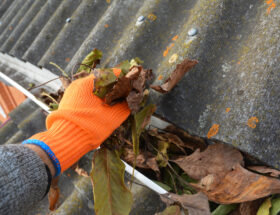If you’re looking for a flooring option that’s visually pleasing, timeless, durable, and long-lasting, then engineered flooring may be one of the best choices. While other flooring options come and go, engineered wood has proven to be a favorite that may stay for a while.
Engineered hardwood flooring usually consists of a base made of plywood and a very thin layer of real hardwood on top and comes pre-finished. One key advantage of engineered hardwood flooring is that it’s more water-resistant than solid hardwood flooring.
In addition, getting engineered wood will be the same as making a solid investment as it has a possible resale value that may match the initial cost or, in some cases, exceed it. As a result, if you choose to install this type of flooring, consider consulting with a hardwood flooring company that’ll help you get what you desire.
Now that you’re ready to install engineered hardwood flooring, the next thing to find out is what to do before the installation. As a result, discussed in this article are the things to know and keep in mind before the installation process.
- You Need To Clean And Prep The Subfloor
The prep process is an important step when installing engineered hardwood as it’ll make the results last longer. First, remove the existing floor by pulling it up with a pry bar and a hammer.
Once you remove the baseboards, an expansion gap will be created to allow the new floor to expand from both heat and moisture. Once the subfloor is exposed, use a sander to remove paint, oil, adhesives, sealers, and wax.
Once you’re done sanding, cleaning the subfloors is the next part of the process. You should avoid skipping this process as you may run into serious problems in the long run. Afterward, vacuum the floors of any dust and debris and pay close attention to the corners.
When choosing a cleaner, opt for an enzymatic one made for these particular stains and odors. Alternatively, you can opt for a homemade solution that’s made by combining one cup of warm water, a quarter cup of mild dishwashing soap, and a third cup of white vinegar.
Once mixed, shake it well, then spray the solution on stains and wipe it off to check the results. If it works, mix a bigger batch and use it to clean it before letting it settle thoroughly. Give the subfloor time to dry before continuing to the next step.
- Choose A Moisture Barrier
When installing hardwood flooring, every step needs to be taken to avoid additional problems in the future. As a result, you may need to keep moisture damage in mind as it may seep into the hardwood from your subfloor leading to cupping and rotting.
To avoid this, you may need to get a moisture barrier that’ll keep everything dry or at 2%. And depending on the type of subfloor, moisture barriers may vary. For instance, a concrete subfloor may require a powerful moisture barrier containing a higher moisture level.
As for plywood or wooden subfloor, you may choose a moisture barrier that traps moisture that would otherwise lead to mold growth. It’s key to note that the installation method of your floor will also affect the strength of the moisture barrier.
- Settle On The Right Installation Method
There are four types of installation methods that can be used when installing engineered hardwood flooring. These types include floating engineered hardwood flooring, glue-down installation, staple-down installation, and nail-down installation.
If you choose the glue-down installation method, you’ll use an adhesive, glue, or bonding agent. This method best suits concrete or wood subfloors, making them more stable when installing engineered hardwoods.
Alternatively, you can opt for floating engineered hardwood flooring where the plank’s weight keeps them in but isn’t fixed to the subfloor. The advantage of floating engineered hardwood is that it can be used on the subfloor. This type of hardwood can expand and contract.
If you have a wooden subfloor, nailing or stapling will work efficiently. However, if your subfloor is made of concrete or chipboard, you should consider other alternatives.
Bottom Line
Installing engineered hardwood flooring requires you to pay attention to every step to avoid experiencing problems in the long run. As a result, you may need to begin by cleaning and prepping the subfloor.
Additionally, settle on the right installation method depending on your subfloor materials and the moisture barrier. You should also remember to add more finishing touches for the best results eventually.









